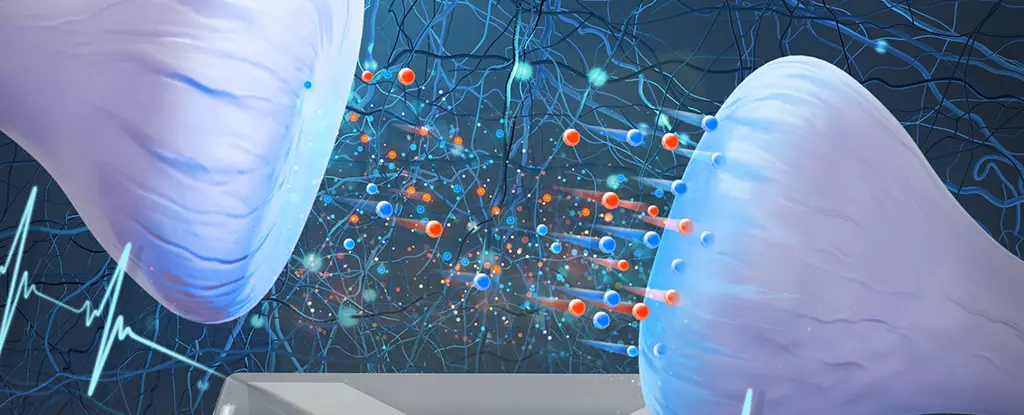In a groundbreaking development, researchers have successfully simulated neurological junctions known as synapses using water and salt, mirroring the intricate functioning of the human brain. This innovative approach has opened doors to the field of iontronics, a fusion of biology and electronics that has the potential to revolutionize computing.
The team of scientists from Utrecht University in the Netherlands and Sogang University in South Korea drew inspiration from the human brain’s utilization of ions dissolved in water to transmit signals between neurons. This biological mechanism, which underpins synaptic plasticity, allows neurons to adapt the strength of connections in response to input history.
Dubbed as an ‘iontronic memristor’, the device serves as a memory unit that retains information about the electrical charge that has passed through it. Shaped like a cone and filled with a solution of water and salt, this miniature device measures a mere 150 by 200 micrometers – comparable to the width of a few human hairs. By inducing electrical impulses, ions within the device are prompted to move through the cone-shaped channel, leading to variations in electrical charge and subsequently, ion movement.
Memory Retention and Potential Applications
The ability of the synapse to conduct electricity in a modified manner enables the deciphering of input signals, essentially functioning as a form of memory. Although the technology is still in its nascent stages, researchers believe that manipulating the length of the channel could enhance memory retention, akin to the brain’s synaptic plasticity. Furthermore, the cost-effective production of iontronic memristors implies their scalability for diverse applications in the future.
By emulating the brain’s neuronal behavior using water and salt-based systems, scientists aim to bridge the gap between artificial and biological intelligence. This approach, which diverges from conventional electrical methodologies, holds promise for achieving the computational capacity and efficiency of the human brain within computer systems. The researchers foresee a plethora of possibilities for integrating these synthetic synapses in unique configurations to maximize their utility.
Combining Theoretical and Experimental Physics
The collaborative efforts of theoretical physicist Tim Kamsma and his team underscore the fusion of theoretical and experimental physics in pushing the boundaries of scientific innovation. The successful creation of an artificial synapse marks a ‘wow’ moment for the researchers, signifying a significant leap forward in iontronics research. Kamsma’s exclamation of “wow!” epitomizes the excitement and potential inherent in this transformative technology.

Leave a Reply